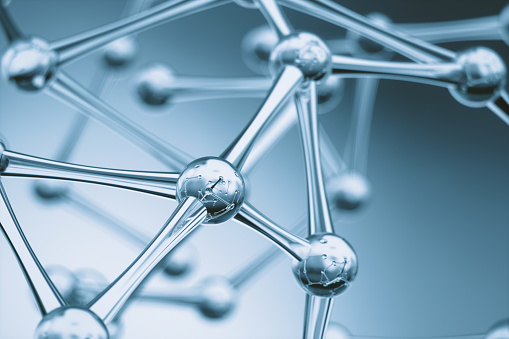The Duty of Defoamers in Enhancing Item Top Quality and Performance
In different making procedures, the presence of foam can significantly impede item quality and operational performance. Defoamers function as important ingredients that alleviate this issue, ensuring smoother manufacturing workflows while improving the functional and visual qualities of the end products (defoamers). Their application covers a multitude of sectors, from food and beverage to pharmaceuticals, where uniformity and reliability are extremely important. The option of the ideal defoamer can be crucial to accomplishing optimum outcomes, raising crucial inquiries concerning formulation compatibility and performance metrics that merit additional expedition.
Recognizing Defoamers
Comprehending the function of defoamers is vital for preserving product top quality throughout numerous markets. Defoamers are chemical additives developed to lower and protect against the development of foam in liquid systems, which can adversely affect procedures such as blending, filling, and surface tension. Foaming can bring about inadequacies, product flaws, and jeopardized aesthetic allure, making defoamers a critical element in producing operations.
In industrial applications, defoamers aid to improve product consistency and security. The efficient usage of defoamers not only ensures smoother production procedures however additionally contributes to premium item performance.
Additionally, the choice and formula of a defoamer should straighten with specific application demands, such as compatibility with various other components, performance under varying temperature and pH problems, and potential regulative restraints. Ultimately, comprehending defoamers' features and their importance in different solutions is essential for maximizing production and making sure the highest possible quality final product.
Kinds of Defoamers
Defoamers can be classified into several types based upon their make-up and device of action. The primary types include silicone-based, non-silicone natural, and not natural defoamers.
Silicone-based defoamers are amongst the most effective, mostly as a result of their capacity to spread out quickly on the liquid surface and interrupt foam development. Their distinct chemical structure enables premium stability, making them ideal for high-temperature applications and atmospheres with differing pH levels.
Non-silicone natural defoamers, usually made up of all-natural oils or fats, are valued for their biodegradability and reduced poisoning. These are typically used in food and beverage applications where security and ecological effect are vital.
Not natural defoamers, which consist of materials like talc or calcium carbonate, act by boosting the thickness of the liquid, thus decreasing foam stability. They are frequently utilized in industrial procedures where compatibility with various other materials is not an issue.
Each kind of defoamer has distinct benefits and restrictions, enabling for tailored solutions relying on the certain lathering issues encountered in various applications. Recognizing these differences is essential for optimizing efficiency and accomplishing desired item high quality.
Applications Across Industries
Countless markets leverage defoamers to boost product quality and functional efficiency. In the food and drink industry, defoamers are essential in procedures such as brewing and dairy manufacturing to avoid foam development, which can cause inefficiencies and item disparity. By regulating foam, makers can guarantee far better yield and an extra uniform item.
In the pharmaceutical industry, defoamers play a crucial role in the formula of liquid medicines, where too much foam can hinder blending and accurate dosing. Their usage helps preserve the honesty of the formulations and promotes smoother manufacturing processes.
The paint and coatings market additionally depends on defoamers to improve the performance of products throughout application. By visit this site right here lessening foam, these additives guarantee a smoother coating and boost the aesthetic high qualities of the last item.

Advantages of Utilizing Defoamers
While the application of defoamers varies across industries, their advantages continually boost item high quality and process efficiency. One substantial benefit is the reduction of foam formation throughout making procedures, which can otherwise lead to manufacturing hold-ups and variances in product quality. By minimizing foam, defoamers enable a smoother circulation of materials, helping with more reliable operations and decreasing the likelihood of tools malfunctions.
Additionally, the usage of defoamers can improve the appearance and texture of end products. In industries such as finishings, paints, and food processing, too much foam can jeopardize the visual aesthetics and general quality, while the ideal defoamer application makes sure an uniform coating and desirable features. Defoamers can add to cost financial savings by decreasing waste throughout production and enhancing the usage of raw materials.

Selecting the Right Defoamer
Selecting the right defoamer is essential for optimizing production procedures and making certain item high quality. The option of defoamer influences not only the performance of foam control yet additionally the general performance characteristics of the end product. Aspects to take into consideration include the type of application, the chemistry of the formula, and the environmental conditions under which the item will be made use of.
Various sectors might need specific defoamer kinds, such as silicone-based, natural, or polymeric defoamers. Comprehending the compatibility of the defoamer with the primary active ingredients is crucial to stay clear of unfavorable reactions that can compromise product integrity. In addition, the defoamer's efficiency in various temperature levels and pH levels must be reviewed to guarantee consistent efficiency.
Testing the defoamer my blog in small-scale applications can provide important understandings into its efficiency and viability. Consideration of governing compliance, particularly in food, drugs, and cosmetics, is paramount in choosing a defoamer. Inevitably, an extensive analysis of these elements will certainly cause the option of a defoamer that not just manages foam effectively yet additionally boosts the high quality and efficiency of the end product.
Verdict

In final thought, defoamers are crucial additives that substantially improve product quality and efficiency throughout different industries. By successfully lowering foam formation, these agents not just improve functional performance but likewise add to the visual and functional integrity of items. The critical selection and application of defoamers cause cost savings, optimized source usage, and enhanced customer complete satisfaction. Generally, the value of defoamers in commercial processes visit this page can not be overstated, as they play an essential role in attaining high-quality and regular results.
Frothing can lead to ineffectiveness, product defects, and jeopardized aesthetic appeal, making defoamers a critical part in manufacturing operations.
